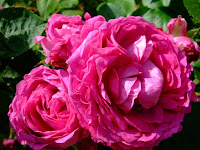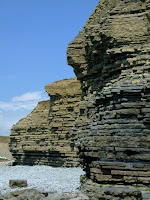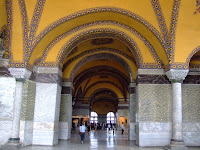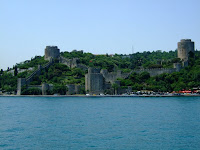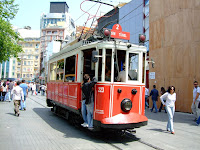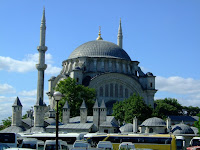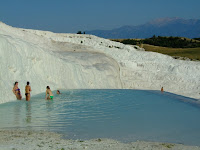 sadly, features in the news on a regular basis due to the, statistically disproportionately, high number of local young people who commit suicide. At the top of the town is another impressive castle ruin, with a very deep but now dry moat; all that remains of Coity Castle. We also checked out the cute hump-backed bridge, after which the town is named. Pilgrims used to pass over this bridge on the way to St David's church further west in Wales.
sadly, features in the news on a regular basis due to the, statistically disproportionately, high number of local young people who commit suicide. At the top of the town is another impressive castle ruin, with a very deep but now dry moat; all that remains of Coity Castle. We also checked out the cute hump-backed bridge, after which the town is named. Pilgrims used to pass over this bridge on the way to St David's church further west in Wales.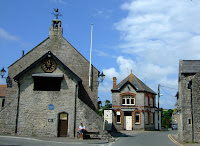 Llantwit Major is a picturesque town; with a number of interesting buildings and from there we toured nearer to the coast, and drove through Barry for a look at their “island” seaside resort. In true British fashion it is wall-to-wall arcade and fast food: we did not bother to get out of the car. Far nicer was Penarth; this Victorian seaside town has a colourful pier, and did appeal to us.
Llantwit Major is a picturesque town; with a number of interesting buildings and from there we toured nearer to the coast, and drove through Barry for a look at their “island” seaside resort. In true British fashion it is wall-to-wall arcade and fast food: we did not bother to get out of the car. Far nicer was Penarth; this Victorian seaside town has a colourful pier, and did appeal to us.
Tredegar House was the main focus of the day. Newport Council now runs this, the former estate of the Morgan family.
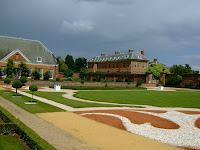 They have done an excellent job in restoring the huge mansion, and we went on a conducted tour, made interesting and amusing by our excellent guide. The house has many beautifully decorated rooms; the best would have to be the oak room. Completely panelled in intricately carved oak, and with wide oak floorboards, the longest of which is 14m long. Although built in 1670’s, it still looks very beautiful today, a room anyone would love to spend time in.
They have done an excellent job in restoring the huge mansion, and we went on a conducted tour, made interesting and amusing by our excellent guide. The house has many beautifully decorated rooms; the best would have to be the oak room. Completely panelled in intricately carved oak, and with wide oak floorboards, the longest of which is 14m long. Although built in 1670’s, it still looks very beautiful today, a room anyone would love to spend time in. The gardens are also pleasant to walk around. They have very successfully recreated a parterre, using shells, coloured sand, grass and coal chips. Coal gave a very different look, and was appropriate, as the family made their fortune from coal mining.
The gardens are also pleasant to walk around. They have very successfully recreated a parterre, using shells, coloured sand, grass and coal chips. Coal gave a very different look, and was appropriate, as the family made their fortune from coal mining.

